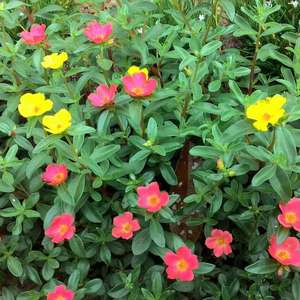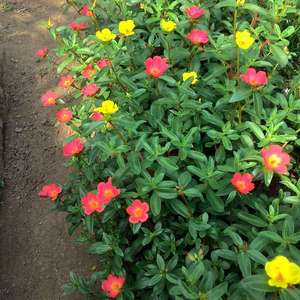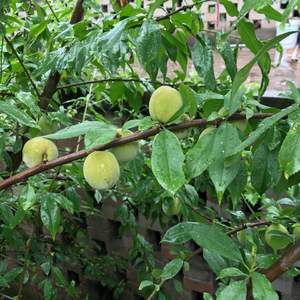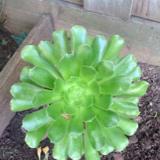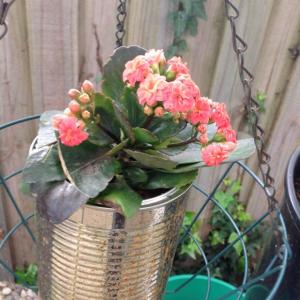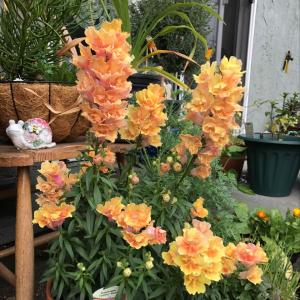文章
ritau
2020年07月16日

Peaches were cultivated in China as far back as 8,000 years ago, with domestication at least 4,000 years ago. Some sources claim that peaches originated in China, whilst others claim that it originated in Iran.
Hundreds of peach and nectarine cultivars are known. These are classified into two categories — the freestones and the clingstones, depending on whether the flesh sticks to the stone or not. Freestones are those whose flesh separates readily from the pit. Clingstones are those whose flesh clings tightly to the pit. Some cultivars are partially freestone and clingstone, so are called semifree. Freestone types are preferred for eating fresh, while clingstone types are for canning. The fruit flesh may be creamy white to deep yellow, to dark red; the hue and shade of the color depends on the cultivar.
Peaches with white flesh typically are very sweet with little acidity, while yellow-fleshed peaches typically have an acidic tang coupled with a sweet floral taste (sometimes described as the classic peach taste, which mellows as the peach ripens and softens), red fleshed varieties are typically flavourful and tangy but with a tart skin, though this also varies greatly. Yellow peaches have a sturdier flesh that is not as easily bruised.Both colors often have some red on their skin. Low-acid white-fleshed peaches are the most popular kinds in China, Japan, and neighbouring Asian countries, while Europeans and North Americans have historically favoured the acidic, yellow-fleshed cultivars.
Peach breeding has favored cultivars with more firmness, more red color, and shorter fuzz on the fruit surface. These characteristics ease shipping and improve supermarket sales due to eye appeal. However, this selection process has not necessarily led to increased flavor. Peaches have a short shelf life, so commercial growers typically plant a mix of different cultivars to have fruit to ship all season long.

lthough its botanical name Prunus persica refers to Persia (present Iran) from where it came to Europe, genetic studies suggest peaches originated in China, where they have been cultivated since the neolithic period. Until recently, it was believed that the cultivation started c. 2000 BC.More recent evidence indicates that domestication occurred as early as 6000 BC in Zhejiang Province of China. The oldest archaeological peach stones are from the Kuahuqiao site. Archaeologists point to the Yangtze River Valley as the place where the early selection for favorable peach varieties probably took place. Peaches were mentioned in Chinese writings and literature beginning from the early 1st millennium BC.
A domesticated peach appeared very early in Japan, in 4700–4400 BC, during the Jōmon period. It was already similar to modern cultivated forms, where the peach stones are significantly larger and more compressed than earlier stones. This domesticated type of peach was brought into Japan from China. Nevertheless, in China itself, this variety is currently attested only at a later date of c. 3300 to 2300 BC.
In India, the peach first appeared by c. 1700 BC, during the Harappan period.
It is also found elsewhere in Western Asia in ancient times. Peach cultivation reached Greece by 300 BC. It is often claimed that Alexander the Great introduced the fruit into Europe after he conquered the Persians, although there is no historical evidence for this belief. Peaches were, however, well known to the Romans in the 1st century AD; the oldest known artistic representations of the fruit are in two fragments of wall paintings, dated to the 1st century AD, in Herculaneum, preserved due to the Vesuvius eruption of 79 AD and now held in the National Archaeological Museum in Naples. Archaeological finds show that peaches were cultivated widely in Roman north-western Continental Europe, but production collapsed around the sixth century; some revival of production followed with the Carolingian Renaissance of the ninth century.
The peach was brought to the Americas by Spanish explorers in the 16th century, and eventually made it to England and France in the 17th century, where it was a prized and expensive treat. The horticulturist George Minifie supposedly brought the first peaches from England to its North American colonies in the early 17th century, planting them at his Estate of Buckland in Virginia. Although Thomas Jefferson had peach trees at Monticello, American farmers did not begin commercial production until the 19th century in Maryland, Delaware, Georgia, South Carolina, and finally in Virginia.

In April 2010, an international consortium, the International Peach Genome Initiative (IPGI), that include researchers from the United States, Italy, Chile, Spain, and France announced they had sequenced the peach tree genome (doubled haploid Lovell). Recently, IPGI published the peach genome sequence and related analyses. The peach genome sequence is composed of 227 million nucleotides arranged in eight pseudomolecules representing the eight peach chromosomes (2n = 16). In addition, a total of 27,852 protein-coding genes and 28,689 protein-coding transcripts were predicted.
Particular emphasis in this study is reserved for the analysis of the genetic diversity in peach germplasm and how it was shaped by human activities such as domestication and breeding. Major historical bottlenecks were individuated, one related to the putative original domestication that is supposed to have taken place in China about 4,000–5,000 years ago, the second is related to the western germplasm and is due to the early dissemination of the peach in Europe from China and the more recent breeding activities in the United States and Europe. These bottlenecks highlighted the substantial reduction of genetic diversity associated with domestication and breeding activities.
Raw peach flesh is 89% water, 10% carbohydrates, 1% protein, and contains negligible fat. A medium raw peach, weighing 100 g (3.5 oz), supplies 39 calories, and contains small amounts of essential nutrients, but none is a significant proportion of the Daily Value (DV, right table). A raw nectarine has similar low content of nutrients. The glycemic load of an average peach (120 grams) is 5, similar to other low-sugar fruits.
Hundreds of peach and nectarine cultivars are known. These are classified into two categories — the freestones and the clingstones, depending on whether the flesh sticks to the stone or not. Freestones are those whose flesh separates readily from the pit. Clingstones are those whose flesh clings tightly to the pit. Some cultivars are partially freestone and clingstone, so are called semifree. Freestone types are preferred for eating fresh, while clingstone types are for canning. The fruit flesh may be creamy white to deep yellow, to dark red; the hue and shade of the color depends on the cultivar.
Peaches with white flesh typically are very sweet with little acidity, while yellow-fleshed peaches typically have an acidic tang coupled with a sweet floral taste (sometimes described as the classic peach taste, which mellows as the peach ripens and softens), red fleshed varieties are typically flavourful and tangy but with a tart skin, though this also varies greatly. Yellow peaches have a sturdier flesh that is not as easily bruised.Both colors often have some red on their skin. Low-acid white-fleshed peaches are the most popular kinds in China, Japan, and neighbouring Asian countries, while Europeans and North Americans have historically favoured the acidic, yellow-fleshed cultivars.
Peach breeding has favored cultivars with more firmness, more red color, and shorter fuzz on the fruit surface. These characteristics ease shipping and improve supermarket sales due to eye appeal. However, this selection process has not necessarily led to increased flavor. Peaches have a short shelf life, so commercial growers typically plant a mix of different cultivars to have fruit to ship all season long.

lthough its botanical name Prunus persica refers to Persia (present Iran) from where it came to Europe, genetic studies suggest peaches originated in China, where they have been cultivated since the neolithic period. Until recently, it was believed that the cultivation started c. 2000 BC.More recent evidence indicates that domestication occurred as early as 6000 BC in Zhejiang Province of China. The oldest archaeological peach stones are from the Kuahuqiao site. Archaeologists point to the Yangtze River Valley as the place where the early selection for favorable peach varieties probably took place. Peaches were mentioned in Chinese writings and literature beginning from the early 1st millennium BC.
A domesticated peach appeared very early in Japan, in 4700–4400 BC, during the Jōmon period. It was already similar to modern cultivated forms, where the peach stones are significantly larger and more compressed than earlier stones. This domesticated type of peach was brought into Japan from China. Nevertheless, in China itself, this variety is currently attested only at a later date of c. 3300 to 2300 BC.
In India, the peach first appeared by c. 1700 BC, during the Harappan period.
It is also found elsewhere in Western Asia in ancient times. Peach cultivation reached Greece by 300 BC. It is often claimed that Alexander the Great introduced the fruit into Europe after he conquered the Persians, although there is no historical evidence for this belief. Peaches were, however, well known to the Romans in the 1st century AD; the oldest known artistic representations of the fruit are in two fragments of wall paintings, dated to the 1st century AD, in Herculaneum, preserved due to the Vesuvius eruption of 79 AD and now held in the National Archaeological Museum in Naples. Archaeological finds show that peaches were cultivated widely in Roman north-western Continental Europe, but production collapsed around the sixth century; some revival of production followed with the Carolingian Renaissance of the ninth century.
The peach was brought to the Americas by Spanish explorers in the 16th century, and eventually made it to England and France in the 17th century, where it was a prized and expensive treat. The horticulturist George Minifie supposedly brought the first peaches from England to its North American colonies in the early 17th century, planting them at his Estate of Buckland in Virginia. Although Thomas Jefferson had peach trees at Monticello, American farmers did not begin commercial production until the 19th century in Maryland, Delaware, Georgia, South Carolina, and finally in Virginia.

In April 2010, an international consortium, the International Peach Genome Initiative (IPGI), that include researchers from the United States, Italy, Chile, Spain, and France announced they had sequenced the peach tree genome (doubled haploid Lovell). Recently, IPGI published the peach genome sequence and related analyses. The peach genome sequence is composed of 227 million nucleotides arranged in eight pseudomolecules representing the eight peach chromosomes (2n = 16). In addition, a total of 27,852 protein-coding genes and 28,689 protein-coding transcripts were predicted.
Particular emphasis in this study is reserved for the analysis of the genetic diversity in peach germplasm and how it was shaped by human activities such as domestication and breeding. Major historical bottlenecks were individuated, one related to the putative original domestication that is supposed to have taken place in China about 4,000–5,000 years ago, the second is related to the western germplasm and is due to the early dissemination of the peach in Europe from China and the more recent breeding activities in the United States and Europe. These bottlenecks highlighted the substantial reduction of genetic diversity associated with domestication and breeding activities.
Raw peach flesh is 89% water, 10% carbohydrates, 1% protein, and contains negligible fat. A medium raw peach, weighing 100 g (3.5 oz), supplies 39 calories, and contains small amounts of essential nutrients, but none is a significant proportion of the Daily Value (DV, right table). A raw nectarine has similar low content of nutrients. The glycemic load of an average peach (120 grams) is 5, similar to other low-sugar fruits.
0
0
文章
Miss Chen
2017年11月17日

Tomatoes grow best in temperatures between 70 and 80 degrees Fahrenheit, according to the University of Georgia Extension. Fortunately, the Peach State has plenty of days with temperatures in this range, making for a relatively long planting season.

Starting Seeds
Georgia tomato seeds can be started indoors in late winter. Begin growing these four to seven weeks before the last frost in your part of the state. In Southern Georgia, you can begin these in early February. If you live in Northern Georgia, you may have to wait until late February or early March.
Planting Seedlings
Plant seedlings from mid-March to early May in Georgia. Those in the southern part of the state can normally plant any time during this period. Gardeners in Northern Georgia, however, should typically plant after mid-April.
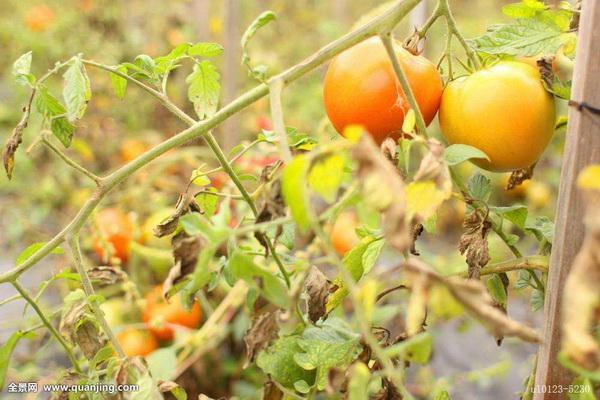
Second Planting
Some residents in the southern part of the state can plant a second crop in July. You could also plant tomatoes in a container during this time. Protect the plants by bringing them indoors at night in September and October if you live in the northern part of the state.

Starting Seeds
Georgia tomato seeds can be started indoors in late winter. Begin growing these four to seven weeks before the last frost in your part of the state. In Southern Georgia, you can begin these in early February. If you live in Northern Georgia, you may have to wait until late February or early March.
Planting Seedlings
Plant seedlings from mid-March to early May in Georgia. Those in the southern part of the state can normally plant any time during this period. Gardeners in Northern Georgia, however, should typically plant after mid-April.

Second Planting
Some residents in the southern part of the state can plant a second crop in July. You could also plant tomatoes in a container during this time. Protect the plants by bringing them indoors at night in September and October if you live in the northern part of the state.
0
0
文章
Dummer. ゛☀
2017年09月22日

Christmas Cactus is a jungle cactus that prefers humidity and moisture, unlike its standard cactus cousins, which require a warm, arid climate. A winter-bloomer, Christmas Cactus displays flowers in shades of red, lavender, rose, purple, white, peach, cream and orange, depending on the variety. These prolific growers eventually need to be repotted. Repotting Christmas Cactus isn’t complicated, but the key is knowing when and how to repot a Christmas Cactus.
When to Repot
Most plants are best repotted when they display new growth in spring, but Christmas Cactus repotting should be done after blooming ends and the flowers have wilted in late winter or early spring. Never attempt to repot the plant while it is actively blooming.
Don’t rush to repot Christmas Cactus because this hardy succulent is happiest when its roots are slightly crowded. Frequent repotting can damage the plant.
Repotting Christmas Cactus every 3 to 4 years is usually adequate, but you may prefer to wait until the plant begins to look tired or you notice a few roots growing through the drainage hole. Often, a plant can bloom happily in the same pot for years.
How to Repot
Here are some Christmas Cactus potting tips that will help you find success:
Take your time because repotting a Christmas Cactus can be tricky. A lightweight, well-drained potting mixture is critical, so look for a commercial mix for bromeliads or succulents. You can also use a mixture of two-thirds regular potting soil and one-third sand.
Repot Christmas Cactus into a pot only slightly larger than the current container. Be sure the container has a drainage hole in the bottom. Although Christmas Cactus likes moisture, it will soon rot if the roots are deprived of air.
Remove the plant from its pot, along with the surrounding soil ball, and then gently loosen the roots. If the potting mix is compacted, gently wash it away from the roots with a little water.
Replant the Christmas cactus in the new pot so the top of the root ball is about an inch (2.5 cm) below the rim of the pot. Fill in around the roots with fresh potting mix and pat the soil lightly to remove air pockets. Water it moderately.
Put the plant in a shady location for two or three days, then resume the plant’s normal care routine.

When to Repot
Most plants are best repotted when they display new growth in spring, but Christmas Cactus repotting should be done after blooming ends and the flowers have wilted in late winter or early spring. Never attempt to repot the plant while it is actively blooming.

Don’t rush to repot Christmas Cactus because this hardy succulent is happiest when its roots are slightly crowded. Frequent repotting can damage the plant.
Repotting Christmas Cactus every 3 to 4 years is usually adequate, but you may prefer to wait until the plant begins to look tired or you notice a few roots growing through the drainage hole. Often, a plant can bloom happily in the same pot for years.

How to Repot
Here are some Christmas Cactus potting tips that will help you find success:
Take your time because repotting a Christmas Cactus can be tricky. A lightweight, well-drained potting mixture is critical, so look for a commercial mix for bromeliads or succulents. You can also use a mixture of two-thirds regular potting soil and one-third sand.

Repot Christmas Cactus into a pot only slightly larger than the current container. Be sure the container has a drainage hole in the bottom. Although Christmas Cactus likes moisture, it will soon rot if the roots are deprived of air.
Remove the plant from its pot, along with the surrounding soil ball, and then gently loosen the roots. If the potting mix is compacted, gently wash it away from the roots with a little water.

Replant the Christmas cactus in the new pot so the top of the root ball is about an inch (2.5 cm) below the rim of the pot. Fill in around the roots with fresh potting mix and pat the soil lightly to remove air pockets. Water it moderately.
Put the plant in a shady location for two or three days, then resume the plant’s normal care routine.
0
0
文章
Dummer. ゛☀
2017年09月17日

Plum curculio, a snout beetle, is an important pest on stone fruits like plums, cherries, and peaches. Plum curculio is one of the most serious pests of peach trees; they lay eggs within the fruit and both adults and larvae feed on the fruit, causing brown rot of the fruit. On apples, plum curculio is considered the second most damaging pest after codling moth.
Symptoms and Diagnosis
Plum curculio beetles, Conotrachelus nenuphar, can be found on plum, cherry, peach, and apple trees, less commonly on nectarine and pear trees. Fruit may fall prematurely, in late May and June. The skin of infected fruit has small crescent-shaped blemishes that eventually become swollen and knotted. Upon closer examination, larvae may be seen feeding near the blemishes. Infested fruit is often hard and misshapen. The larvae create holes in the fruit skin when they leave the fruit to pupate. These holes are clean-cut and free of frass or webbing.
Life Cycle
Plum curculio beetles are dark brown, about 1/4 inch long, and have a prominent snout, measuring about 1/3 the length of their bodies. They have four characteristic humps on their wing covers. Adults may overwinter in the soil or in hedgerows near host trees. These adults emerge from their overwintering sites to feed on trees in early spring. Females lay eggs within the fruit. The larvae that emerge from the developing fruit have grayish-white, worm-like bodies with brown heads and can be seen on infested trees in late summer. Larvae may feed on the fruit for 2–3 weeks before they burrow into the ground to pupate. Adults emerge in mid- to latesummer to cause more feeding damage on mature fruit before they overwinter.
Integrated Pest Management Strategies
1. Shake infested trees. In backyards with only a handful of infested trees, plum curculios may be shaken out of infested trees. This technique works best early in the day when the beetles are sluggish. Lay paper or cloth underneath the trees to collect the beetles. Destroy the collected beetles.
2. Clean up fallen fruit in which eggs or larvae may be developing.
3. Cultivate the soil surrounding infested trees in late spring or early summer to destroy pupating larvae that may have fallen to the ground with the fruit or pupae that may be developing in burrows in the ground.
4. Apply insecticides when populations of adult beetles are severe. Apply carbaryl (Sevin) spray to curb feeding damage and prevent beetles from laying eggs. It is important to delay application of the pesticide until after flower petals drop to avoid harming pollinating insects. Reapply pesticides two more times, at 10–14 day intervals. Other pesticides registered for use include azadirachtin (Bio-Neem, Margosan-O), Beauvaria bassiana, malathion, and pyrethrins.

Symptoms and Diagnosis
Plum curculio beetles, Conotrachelus nenuphar, can be found on plum, cherry, peach, and apple trees, less commonly on nectarine and pear trees. Fruit may fall prematurely, in late May and June. The skin of infected fruit has small crescent-shaped blemishes that eventually become swollen and knotted. Upon closer examination, larvae may be seen feeding near the blemishes. Infested fruit is often hard and misshapen. The larvae create holes in the fruit skin when they leave the fruit to pupate. These holes are clean-cut and free of frass or webbing.

Life Cycle
Plum curculio beetles are dark brown, about 1/4 inch long, and have a prominent snout, measuring about 1/3 the length of their bodies. They have four characteristic humps on their wing covers. Adults may overwinter in the soil or in hedgerows near host trees. These adults emerge from their overwintering sites to feed on trees in early spring. Females lay eggs within the fruit. The larvae that emerge from the developing fruit have grayish-white, worm-like bodies with brown heads and can be seen on infested trees in late summer. Larvae may feed on the fruit for 2–3 weeks before they burrow into the ground to pupate. Adults emerge in mid- to latesummer to cause more feeding damage on mature fruit before they overwinter.

Integrated Pest Management Strategies
1. Shake infested trees. In backyards with only a handful of infested trees, plum curculios may be shaken out of infested trees. This technique works best early in the day when the beetles are sluggish. Lay paper or cloth underneath the trees to collect the beetles. Destroy the collected beetles.
2. Clean up fallen fruit in which eggs or larvae may be developing.
3. Cultivate the soil surrounding infested trees in late spring or early summer to destroy pupating larvae that may have fallen to the ground with the fruit or pupae that may be developing in burrows in the ground.

4. Apply insecticides when populations of adult beetles are severe. Apply carbaryl (Sevin) spray to curb feeding damage and prevent beetles from laying eggs. It is important to delay application of the pesticide until after flower petals drop to avoid harming pollinating insects. Reapply pesticides two more times, at 10–14 day intervals. Other pesticides registered for use include azadirachtin (Bio-Neem, Margosan-O), Beauvaria bassiana, malathion, and pyrethrins.
0
0
文章
Dummer. ゛☀
2017年09月17日

Peach leaf curl is a springtime disease caused by the fungus, Taphrina deformans. It infects the leaves and shoots of peaches and nectarines. Apricots are immune. It is one of the most common diseases of these fruits. It causes the leaves to curl and turn reddish in color. A severe infection can cause reduced yields. 
Symptoms and Diagnosis
Symptoms first appear in spring. New leaves become curled and develop reddish areas. The reddish areas become thickened and puckered resulting in severely distorted leaves. As the disease progresses, the thickened areas turn yellowish gray and become covered with velvety spores. Affected leaves turn yellow or brown and fall prematurely. Affected shoots usually send out new leaves which often are unaffected by the disease unless rainy weather ensues. In more severe infections, shoots may become thickened and die.
Aphids can also cause leaves to curl. If present, the insects or cast skins will be evident to the naked eye.
Life Cycle
The fungus overwinters on bud scales, on twigs, and on fallen infected leaves. In spring the fungal spores are splashed onto newly developing leaves. During cool, wet weather the spores germinate on the young leaves and initiate infection. Development of the disease slows as temperatures increase. Older leaves are resistant to infection. Consequently, the disease is most prevalent in the spring.
Integrated Pest Management Strategies
1. Keep plant healthy — avoid excess fertilization. A healthy plant can better withstand the loss of leaves, but excess fertilization can cause succulent tissue that is very susceptible to infection.
2. Clean up diseased leaves. Raking up and disposing of diseased leaves can't hurt, but its value in controlling the disease is slight.
3. Don't panic.Once infection has occurred fungicidal sprays are not effective. A healthy plant should refoliate. Because refoliation normally occurs during warmer, dryer weather, re-infection is usually not a problem. Thinning the fruit crop in years of severe infection can also help maintain plant vigor. To limit damage the year after a moderate to severe infection, follow the protective spray program below.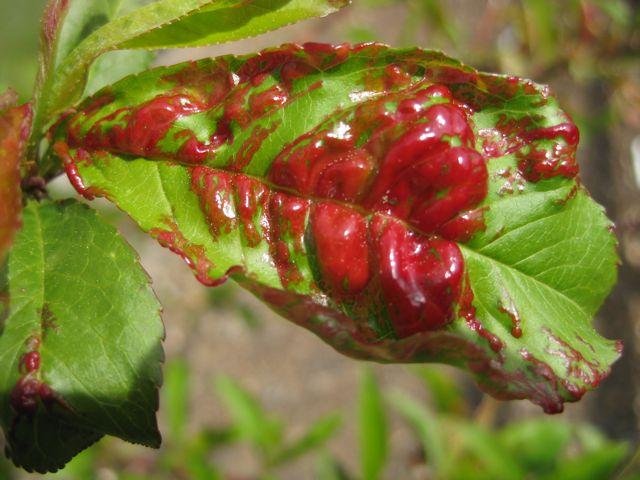
4. Use properly timed protective fungicidal sprays. If leaf curl was a problem in the spring, apply a protective fungicidal spray after leaf fall in October or November or before bud break in late winter, January through February. After buds have begun to swell fungicidal sprays are not satisfactory. Do not apply to foliage. Chemicals effective in controlling leaf curl include copper-based fungicides like Bordeaux mixture, Bravo, lime-sulfur spray, or other brands that list the control of peach leaf curl on their label.
5. Replace the tree with a more disease tolerant variety. If you want to avoid using fungicidal sprays, consider replacing the tree with a more tolerant variety. ‘Redhaven’ and cultivars derived from ‘Redhaven’ have greater tolerance to peach leaf curl disease.

Symptoms and Diagnosis
Symptoms first appear in spring. New leaves become curled and develop reddish areas. The reddish areas become thickened and puckered resulting in severely distorted leaves. As the disease progresses, the thickened areas turn yellowish gray and become covered with velvety spores. Affected leaves turn yellow or brown and fall prematurely. Affected shoots usually send out new leaves which often are unaffected by the disease unless rainy weather ensues. In more severe infections, shoots may become thickened and die.

Aphids can also cause leaves to curl. If present, the insects or cast skins will be evident to the naked eye.
Life Cycle
The fungus overwinters on bud scales, on twigs, and on fallen infected leaves. In spring the fungal spores are splashed onto newly developing leaves. During cool, wet weather the spores germinate on the young leaves and initiate infection. Development of the disease slows as temperatures increase. Older leaves are resistant to infection. Consequently, the disease is most prevalent in the spring.

Integrated Pest Management Strategies
1. Keep plant healthy — avoid excess fertilization. A healthy plant can better withstand the loss of leaves, but excess fertilization can cause succulent tissue that is very susceptible to infection.
2. Clean up diseased leaves. Raking up and disposing of diseased leaves can't hurt, but its value in controlling the disease is slight.
3. Don't panic.Once infection has occurred fungicidal sprays are not effective. A healthy plant should refoliate. Because refoliation normally occurs during warmer, dryer weather, re-infection is usually not a problem. Thinning the fruit crop in years of severe infection can also help maintain plant vigor. To limit damage the year after a moderate to severe infection, follow the protective spray program below.

4. Use properly timed protective fungicidal sprays. If leaf curl was a problem in the spring, apply a protective fungicidal spray after leaf fall in October or November or before bud break in late winter, January through February. After buds have begun to swell fungicidal sprays are not satisfactory. Do not apply to foliage. Chemicals effective in controlling leaf curl include copper-based fungicides like Bordeaux mixture, Bravo, lime-sulfur spray, or other brands that list the control of peach leaf curl on their label.

5. Replace the tree with a more disease tolerant variety. If you want to avoid using fungicidal sprays, consider replacing the tree with a more tolerant variety. ‘Redhaven’ and cultivars derived from ‘Redhaven’ have greater tolerance to peach leaf curl disease.
0
0
文章
Dummer. ゛☀
2017年09月15日

The peach tree borer (Synanthedon exitiosa) does damage to a variety of stone fruit trees. It attacks not the fruit, but the tree itself, burrowing into its trunk near or beneath ground level and devouring its way into the living cambium layer underneath.
Heavy infestations, recognizable from the circle of oozing frass (the larvae’s excreted waste) around the trunk, can completely girdle trees, killing them if left untreated. Young trees are especially vulnerable. Older trees that survive attacks will show less vigor and inferior fruit quality.
Borers are historically found across the United States and in parts of Canada, almost anywhere stone fruits grow. They existed on wild cherry and plum trees before non-native apricots, nectarines and peaches were introduced. Today, they’re a common and persistent threat to both commercial and home orchardists.
The larvae of peachtree borers are white to beige and brown and obtain an length of an inch or more. The chewing end of the larvae darkens as it matures. Despite they’re size, they’re seldom seen as they bore beneath a tree’s bark, gouging out wide, fass-filled tunnels. Pupae, wrapped in silky cocoons, are also unseen hidden inside the tree.
Adult moths have translucent wings and resemble wasps. Females are metallic blue and marked with an orange band on their abdomen. Males are smaller and are marked with yellow stripes. Their emergence a week or two into the summer sets off a frenzy of mating and egg laying.
The lesser peachtree borer (Synanthedon pictipes) is found in the eastern United States, across the southern states to Texas and the midwestern states to Minnesota. It attacks more of the tree, including primary limbs, and is more likely than Synanthedon exitiosa to produce eggs throughout the season. Larva are similar in appearance to exitiosa, but male moths have narrower, more numerous yellow bands across their abdomens. The pest’s life cycle and treatment is similar to those of exitiosa.
Life Cycle
Adults begin emerging in late spring and early summer from larvae that have overwintered inside the tree an inch or two beneath the soil line. They continue to emerge throughout the summer and into the fall. Knowing when moths first emerge in your region, as early as April in Georgia and other warmer areas but more commonly in May and June, is critical to controlling the pest.
The moths begin breeding almost as soon as they emerge. Females lay as many as 400 eggs on the trunk of the tree near the soil line or in the soil against the tree. The eggs take ten days to hatch.
Larvae immediately seek entrance into the tree’s bark, often through cracks, chips and other damage. They tunnel through the bark into the vulnerable cambium layer beneath it and beyond, growing as they do. Some may pass through to adult stage in a single season. As cold weather sets in, larvae will reduce activity and overwinter inside the tree. They begin feeding again when temperatures warm.
In spring, the larvae migrate from their holes, pupating near the entrance to their burrow or in nearby soil, creating a gummy cocoon of silk thread and bits of wood. The cocooning and pupation stages before moths emerge takes as much as four weeks. Moths begin laying eggs within minutes of taking to the air.
Utah State University Extension Cooperative (PDF) has wonderful color photographs of the pest’s various stages.
Damage
Peach tree borers bring major harm to important fruit-crop trees, destroying the tree’s vascular system through boring and girdling while inducing plant pathogens to invade the weakened tree.
Colorado State University’s Extension website doesn’t pull punches when addressing the pest’s effect on home and commercial growers, calling it “the most destructive insect pest of peach, cherry, plum and other stone fruits in Colorado.” The University of Florida’s Institute of Food and Agricultural Sciences provides perspective: “The peachtree borer and the lesser peachtree borer, Synanthedon pictipes, account for more damage to peach trees than all other insect pest combined.”
Borer damage inhibits the conduction of water and nutrients up the trunk to the tree’s branches, leaves and fruits. One or two borers will harm its growth and fruiting. Several burrowing into the same tree, fouling their tunnels with their waste, can kill a newly infested tree in a single season.
Infestation are most common in older trees that have seen damage from canker, harsh winters, pruning and mechanical injury (like trunks being hit by mowers). This give the larvae an easy way into the tree’s insides. The lesser peachtree borer is particularly attracted to older, damaged trees. Numerous larvae cluster at these places in “galleries” where substantial damage may be done.
The Missouri Botanical Garden has photos of damage signs as well as the larvae at work.
Control
Don’t allow borers to get established. Most trees will survive attack from small numbers. But large numbers of larvae can completely girdle a tree, killing it. Once the larvae move into the bark, they are difficult to manage. They’re most vulnerable at the surface before they chew their way into the tree’s bark and cambium layer.
Wild trees provide a year-to-year home for borers. If you have wild plum, cherry or other stone fruits in your woodlot, consider clearing them. Female adults are attracted to diseased, damaged and otherwise stressed trees. Removing and replacing older, stressed trees that harbor borers can help make control issues easier to deposit their eggs.
Healthy, adequately watered trees are less likely to invite infestation. Take care to keep your trees strong and undamaged.
Borer treatment begins early in spring even before larvae become active. Probe small holes in trunks near the soil line, especially those with evidence of frass, with the point of a knife or stiff wire to crush larvae (and later pupae) beneath the bark. In severe infestations, scoop soil out from around the crown of the tree where frass collects and use a sharp-pointed object to dig out the larvae, taking care not to harm the tree.
Be on watch and prepared for the emergence of adult moths. Because they begin breeding and laying eggs within hours of emerging, it’s important to treat for them as soon as they appear. Ask local nurserymen when the first moths are expected in your area. Monitor trees for moth activity daily and keep journal records for future years. Use pheromone traps or Tangle-Trap® Insect Trap Coating to capture adults. Inspect traps daily.
Begin spraying organic neem oil in the highest recommended concentrations around the crown of the tree and up the first six to 12 inches of the trunk when adults are anticipated. Saturate both bark and soil. The oil will disrupt the moths’ breeding cycle and discourage them from leaving eggs. It will also neutralize eggs that may already have been laid as well as penetrate the bark and inhibit development of larvae already in the tree. Spray twice a month throughout the breeding season which can last until September. Reapply after rains.
Citrus extract sprays will repel adults and discourage egg laying. Begin spraying trunks and around the crown of the tree just ahead of moth hatch.
Paint tree trunks and exposed roots with a paste of Surround WP, a powder made of kaolin clay. Coat base of tree, exposed roots and trunk up to 12 inches. Once dry, the coating deters adults and their egg laying.
Applications of Bt (Bacillus thuringiensis), a naturally occurring soil bacteria, will disrupt larvae and kill them depending on exposure. Spray Bt directly into borer holes after clearing out as much frass as possible.
Spinosad, an OMRI listed pesticide, can also be sprayed on tree trunks as larvae hatch and directly into borer holes. Spraying can be repeated every five or six days up to two weeks before harvest.
A recent study has shown that beneficial nematodes work against this destructive scourge. Nematodes attack eggs, larvae and pupae of numerous insect pests in soil. A spring application of nematodes suppressed 88% of orchard borer infestations. Spring and fall applications were found to be 100% effective.
Parasitic wasps can help with lesser peach tree borer whose eggs can be found. They are not effective on the pupae of the common, greater peachtree borer because they’re under the soil line out of the wasp’s reach. But certain wasps will parasitize eggs found on bark and just-hatched larvae that have not yet worked their way into the tree.
Woodpeckers and other birds will reduce numbers by grabbing larvae on and under the bark. Encourage them by providing suitable habitat and not spraying harmful pesticides.
Cedar chips and bark spread around the base of stone fruit trees is said to repel egg-laying adult moths. In the south, spreading tobacco dust around the base of trees is a traditional method of discouraging pests.
Some do-it-yourself sources advise the use of moth crystals to “gas” the larvae inside their burrows. It’s suggested that crystals worked into the soil at the trees crown will emit vapor that penetrates into the tree. Moth crystals, like moth balls, are made from napthalene, a suspected carcinogen which is also linked to liver failure and neurological damage in infants. Using and handling naphthalene — not a natural-gardening practice — should be avoided.

Heavy infestations, recognizable from the circle of oozing frass (the larvae’s excreted waste) around the trunk, can completely girdle trees, killing them if left untreated. Young trees are especially vulnerable. Older trees that survive attacks will show less vigor and inferior fruit quality.
Borers are historically found across the United States and in parts of Canada, almost anywhere stone fruits grow. They existed on wild cherry and plum trees before non-native apricots, nectarines and peaches were introduced. Today, they’re a common and persistent threat to both commercial and home orchardists.
The larvae of peachtree borers are white to beige and brown and obtain an length of an inch or more. The chewing end of the larvae darkens as it matures. Despite they’re size, they’re seldom seen as they bore beneath a tree’s bark, gouging out wide, fass-filled tunnels. Pupae, wrapped in silky cocoons, are also unseen hidden inside the tree.

Adult moths have translucent wings and resemble wasps. Females are metallic blue and marked with an orange band on their abdomen. Males are smaller and are marked with yellow stripes. Their emergence a week or two into the summer sets off a frenzy of mating and egg laying.
The lesser peachtree borer (Synanthedon pictipes) is found in the eastern United States, across the southern states to Texas and the midwestern states to Minnesota. It attacks more of the tree, including primary limbs, and is more likely than Synanthedon exitiosa to produce eggs throughout the season. Larva are similar in appearance to exitiosa, but male moths have narrower, more numerous yellow bands across their abdomens. The pest’s life cycle and treatment is similar to those of exitiosa.

Life Cycle
Adults begin emerging in late spring and early summer from larvae that have overwintered inside the tree an inch or two beneath the soil line. They continue to emerge throughout the summer and into the fall. Knowing when moths first emerge in your region, as early as April in Georgia and other warmer areas but more commonly in May and June, is critical to controlling the pest.
The moths begin breeding almost as soon as they emerge. Females lay as many as 400 eggs on the trunk of the tree near the soil line or in the soil against the tree. The eggs take ten days to hatch.

Larvae immediately seek entrance into the tree’s bark, often through cracks, chips and other damage. They tunnel through the bark into the vulnerable cambium layer beneath it and beyond, growing as they do. Some may pass through to adult stage in a single season. As cold weather sets in, larvae will reduce activity and overwinter inside the tree. They begin feeding again when temperatures warm.
In spring, the larvae migrate from their holes, pupating near the entrance to their burrow or in nearby soil, creating a gummy cocoon of silk thread and bits of wood. The cocooning and pupation stages before moths emerge takes as much as four weeks. Moths begin laying eggs within minutes of taking to the air.
Utah State University Extension Cooperative (PDF) has wonderful color photographs of the pest’s various stages.

Damage
Peach tree borers bring major harm to important fruit-crop trees, destroying the tree’s vascular system through boring and girdling while inducing plant pathogens to invade the weakened tree.
Colorado State University’s Extension website doesn’t pull punches when addressing the pest’s effect on home and commercial growers, calling it “the most destructive insect pest of peach, cherry, plum and other stone fruits in Colorado.” The University of Florida’s Institute of Food and Agricultural Sciences provides perspective: “The peachtree borer and the lesser peachtree borer, Synanthedon pictipes, account for more damage to peach trees than all other insect pest combined.”
Borer damage inhibits the conduction of water and nutrients up the trunk to the tree’s branches, leaves and fruits. One or two borers will harm its growth and fruiting. Several burrowing into the same tree, fouling their tunnels with their waste, can kill a newly infested tree in a single season.

Infestation are most common in older trees that have seen damage from canker, harsh winters, pruning and mechanical injury (like trunks being hit by mowers). This give the larvae an easy way into the tree’s insides. The lesser peachtree borer is particularly attracted to older, damaged trees. Numerous larvae cluster at these places in “galleries” where substantial damage may be done.
The Missouri Botanical Garden has photos of damage signs as well as the larvae at work.
Control
Don’t allow borers to get established. Most trees will survive attack from small numbers. But large numbers of larvae can completely girdle a tree, killing it. Once the larvae move into the bark, they are difficult to manage. They’re most vulnerable at the surface before they chew their way into the tree’s bark and cambium layer.

Wild trees provide a year-to-year home for borers. If you have wild plum, cherry or other stone fruits in your woodlot, consider clearing them. Female adults are attracted to diseased, damaged and otherwise stressed trees. Removing and replacing older, stressed trees that harbor borers can help make control issues easier to deposit their eggs.
Healthy, adequately watered trees are less likely to invite infestation. Take care to keep your trees strong and undamaged.
Borer treatment begins early in spring even before larvae become active. Probe small holes in trunks near the soil line, especially those with evidence of frass, with the point of a knife or stiff wire to crush larvae (and later pupae) beneath the bark. In severe infestations, scoop soil out from around the crown of the tree where frass collects and use a sharp-pointed object to dig out the larvae, taking care not to harm the tree.
Be on watch and prepared for the emergence of adult moths. Because they begin breeding and laying eggs within hours of emerging, it’s important to treat for them as soon as they appear. Ask local nurserymen when the first moths are expected in your area. Monitor trees for moth activity daily and keep journal records for future years. Use pheromone traps or Tangle-Trap® Insect Trap Coating to capture adults. Inspect traps daily.

Begin spraying organic neem oil in the highest recommended concentrations around the crown of the tree and up the first six to 12 inches of the trunk when adults are anticipated. Saturate both bark and soil. The oil will disrupt the moths’ breeding cycle and discourage them from leaving eggs. It will also neutralize eggs that may already have been laid as well as penetrate the bark and inhibit development of larvae already in the tree. Spray twice a month throughout the breeding season which can last until September. Reapply after rains.
Citrus extract sprays will repel adults and discourage egg laying. Begin spraying trunks and around the crown of the tree just ahead of moth hatch.
Paint tree trunks and exposed roots with a paste of Surround WP, a powder made of kaolin clay. Coat base of tree, exposed roots and trunk up to 12 inches. Once dry, the coating deters adults and their egg laying.
Applications of Bt (Bacillus thuringiensis), a naturally occurring soil bacteria, will disrupt larvae and kill them depending on exposure. Spray Bt directly into borer holes after clearing out as much frass as possible.

Spinosad, an OMRI listed pesticide, can also be sprayed on tree trunks as larvae hatch and directly into borer holes. Spraying can be repeated every five or six days up to two weeks before harvest.
A recent study has shown that beneficial nematodes work against this destructive scourge. Nematodes attack eggs, larvae and pupae of numerous insect pests in soil. A spring application of nematodes suppressed 88% of orchard borer infestations. Spring and fall applications were found to be 100% effective.
Parasitic wasps can help with lesser peach tree borer whose eggs can be found. They are not effective on the pupae of the common, greater peachtree borer because they’re under the soil line out of the wasp’s reach. But certain wasps will parasitize eggs found on bark and just-hatched larvae that have not yet worked their way into the tree.
Woodpeckers and other birds will reduce numbers by grabbing larvae on and under the bark. Encourage them by providing suitable habitat and not spraying harmful pesticides.

Cedar chips and bark spread around the base of stone fruit trees is said to repel egg-laying adult moths. In the south, spreading tobacco dust around the base of trees is a traditional method of discouraging pests.
Some do-it-yourself sources advise the use of moth crystals to “gas” the larvae inside their burrows. It’s suggested that crystals worked into the soil at the trees crown will emit vapor that penetrates into the tree. Moth crystals, like moth balls, are made from napthalene, a suspected carcinogen which is also linked to liver failure and neurological damage in infants. Using and handling naphthalene — not a natural-gardening practice — should be avoided.
0
0
文章
Dummer. ゛☀
2017年08月17日

Christmas cactus is a jungle cactus that prefers humidity and moisture, unlike its standard cactus cousins, which require a warm, arid climate. A winter-bloomer, Christmas cactus displays flowers in shades of red, lavender, rose, purple, white, peach, cream and orange, depending on the variety. These prolific growers eventually need to be repotted. Repotting Christmas cactus isn’t complicated, but the key is knowing when and how to repot a Christmas cactus.
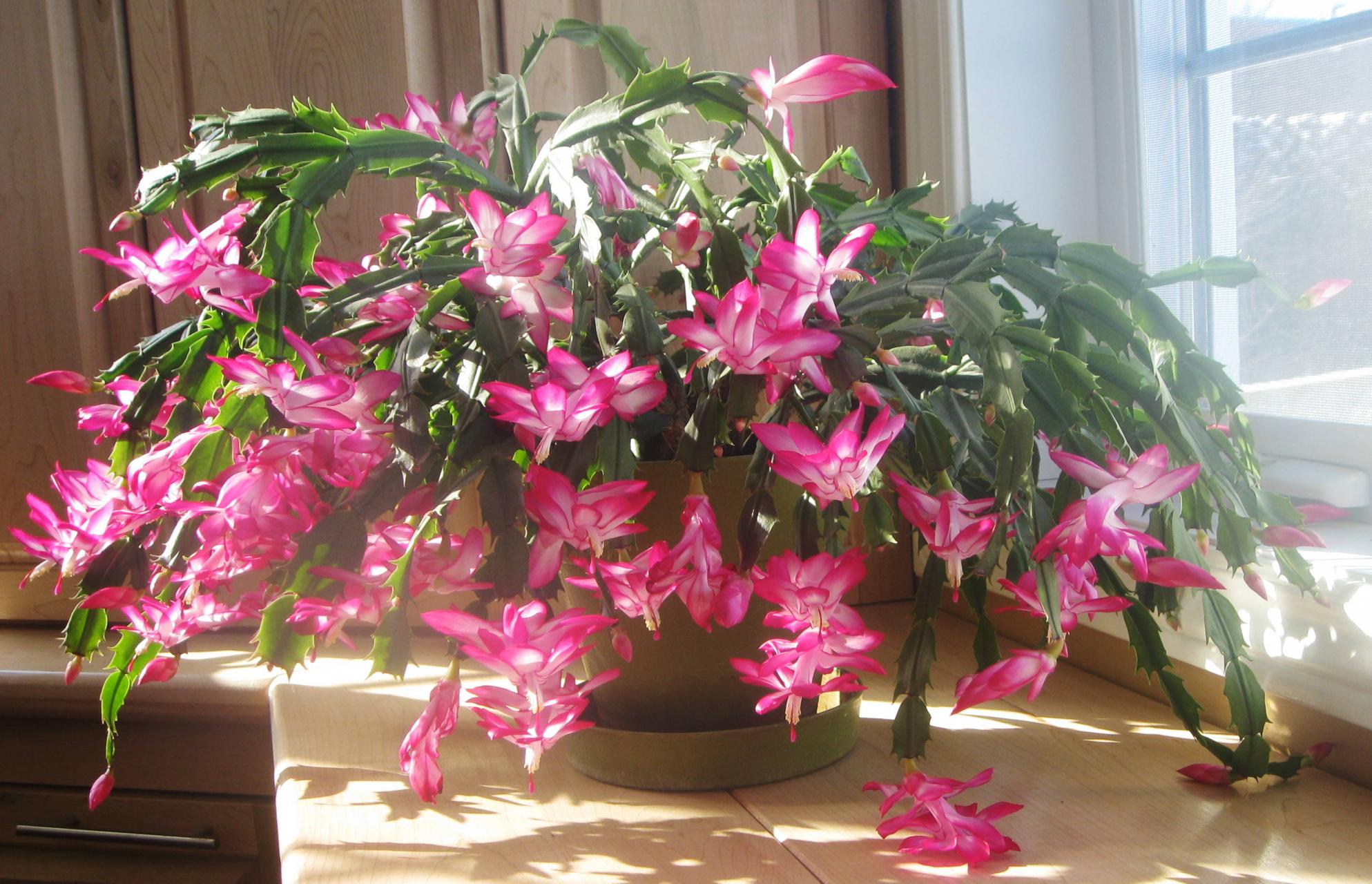
When to Repot Christmas Cactus
Most plants are best repotted when they display new growth in spring, but Christmas cactus repotting should be done after blooming ends and the flowers have wilted in late winter or early spring. Never attempt to repot the plant while it is actively blooming. Don’t rush to repot Christmas cactus because this hardy succulent is happiest when its roots are slightly crowded. Frequent repotting can damage the plant. Repotting Christmas cactus every three to four years is usually adequate, but you may prefer to wait until the plant begins to look tired or you notice a few roots growing through the drainage hole. Often, a plant can bloom happily in the same pot for years.

How to Repot a Christmas Cactus
Here are some Christmas cactus potting tips that will help you find success: Take your time because repotting a Christmas cactus can be tricky. A lightweight, well-drained potting mixture is critical, so look for a commercial mix for bromeliads or succulents. You can also use a mixture of two-thirds regular potting soil and one-third sand. Repot Christmas cactus into a pot only slightly larger than the current container. Be sure the container has a drainage hole in the bottom. Although Christmas cactus likes moisture, it will soon rot if the roots are deprived of air. Remove the plant from its pot, along with the surrounding soil ball, and then gently loosen the roots. If the potting mix is compacted, gently wash it away from the roots with a little water. Replant the Christmas cactus in the new pot so the top of the root ball is about an inch below the rim of the pot. Fill in around the roots with fresh potting mix and pat the soil lightly to remove air pockets. Water it moderately. Put the plant in a shady location for two or three days, then resume the plant’s normal care rout

When to Repot Christmas Cactus
Most plants are best repotted when they display new growth in spring, but Christmas cactus repotting should be done after blooming ends and the flowers have wilted in late winter or early spring. Never attempt to repot the plant while it is actively blooming. Don’t rush to repot Christmas cactus because this hardy succulent is happiest when its roots are slightly crowded. Frequent repotting can damage the plant. Repotting Christmas cactus every three to four years is usually adequate, but you may prefer to wait until the plant begins to look tired or you notice a few roots growing through the drainage hole. Often, a plant can bloom happily in the same pot for years.

How to Repot a Christmas Cactus
Here are some Christmas cactus potting tips that will help you find success: Take your time because repotting a Christmas cactus can be tricky. A lightweight, well-drained potting mixture is critical, so look for a commercial mix for bromeliads or succulents. You can also use a mixture of two-thirds regular potting soil and one-third sand. Repot Christmas cactus into a pot only slightly larger than the current container. Be sure the container has a drainage hole in the bottom. Although Christmas cactus likes moisture, it will soon rot if the roots are deprived of air. Remove the plant from its pot, along with the surrounding soil ball, and then gently loosen the roots. If the potting mix is compacted, gently wash it away from the roots with a little water. Replant the Christmas cactus in the new pot so the top of the root ball is about an inch below the rim of the pot. Fill in around the roots with fresh potting mix and pat the soil lightly to remove air pockets. Water it moderately. Put the plant in a shady location for two or three days, then resume the plant’s normal care rout
0
0
文章
Dummer. ゛☀
2017年08月08日

Shot hole disease, which may also be known as Coryneum blight, is a serious issue in many fruit trees. It is most commonly seen in peach, nectarine, apricot, and plum trees but may also affect almond and prune trees. Some flowering ornamental trees can be affected as well. Since little can be done to control shot hole fungus once the trees have been infected, prevention is essential in treating shot hole disease.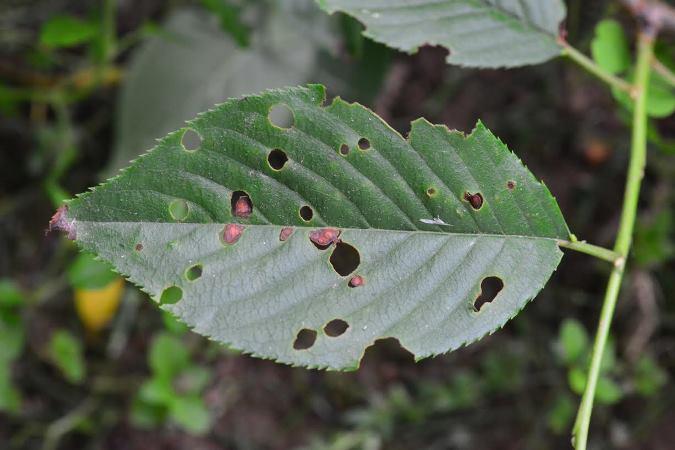
Signs of Shot Hole Fungus
Shot hole disease thrives in wet conditions, especially during extended wet periods. The disease is most noticeable in spring, as new growth is most susceptible. Shot hole fungus commonly overwinters inside the infected buds, as well as twig lesions, where the spores may thrive for several months. Therefore, it is important to thoroughly inspect trees after leaf fall for any symptoms. Most signs of shot hole disease occur in spring, causing spots (or lesions) on new buds and young leaves and shoots. Buds will have a varnished appearance and spots will first look reddish or purplish-brown in color and about ¼ inch in diameter. Eventually, these spots become larger, turning brown and falling out—giving the appearance of gunshot holes in the foliage. As it progresses, the leaves will drop. The stress also affects the tree’s ability to produce, and any fruit that may develop will usually be affected as well with spotting on the upper surface that may even become rough.
Shot Hole Disease Treatment
Infections can occur anytime between fall and spring, but is usually most severe following wet winters. Prolonged spring rains can also encourage this disease, as spores are spread from the splashing rain. Overhead watering may also contribute to the disease. Good sanitation is key to treating shot hole disease naturally. This is the surest way to keep the disease from coming back. All infected buds, blossoms, fruit, and twigs need to be promptly removed and destroyed. Contaminated leaves around and beneath the tree should be removed as well.
Applying dormant spray — Bordeaux or fixed copper fungicide — in late fall is advisable, following the label instructions carefully. These sprays should not be applied in spring once new growth appears but additional applications may be necessary during wet weather.

Signs of Shot Hole Fungus
Shot hole disease thrives in wet conditions, especially during extended wet periods. The disease is most noticeable in spring, as new growth is most susceptible. Shot hole fungus commonly overwinters inside the infected buds, as well as twig lesions, where the spores may thrive for several months. Therefore, it is important to thoroughly inspect trees after leaf fall for any symptoms. Most signs of shot hole disease occur in spring, causing spots (or lesions) on new buds and young leaves and shoots. Buds will have a varnished appearance and spots will first look reddish or purplish-brown in color and about ¼ inch in diameter. Eventually, these spots become larger, turning brown and falling out—giving the appearance of gunshot holes in the foliage. As it progresses, the leaves will drop. The stress also affects the tree’s ability to produce, and any fruit that may develop will usually be affected as well with spotting on the upper surface that may even become rough.

Shot Hole Disease Treatment
Infections can occur anytime between fall and spring, but is usually most severe following wet winters. Prolonged spring rains can also encourage this disease, as spores are spread from the splashing rain. Overhead watering may also contribute to the disease. Good sanitation is key to treating shot hole disease naturally. This is the surest way to keep the disease from coming back. All infected buds, blossoms, fruit, and twigs need to be promptly removed and destroyed. Contaminated leaves around and beneath the tree should be removed as well.

Applying dormant spray — Bordeaux or fixed copper fungicide — in late fall is advisable, following the label instructions carefully. These sprays should not be applied in spring once new growth appears but additional applications may be necessary during wet weather.
0
0
文章
Dummer. ゛☀
2017年08月08日

Cytospora canker disease generally attacks spruces, especially Colorado blue and Norway varieties, as well as peach trees, Douglas firs or hemlock trees. What is cytospora canker? It is a destructive disease caused by the fungus Leucostoma kunzei that disfigures and can even kill vulnerable trees. Read on for more information about symptoms of cytospora canker as well as cytospora canker treatment.
What is Cytospora Canker? You may not have heard of cytospora canker until after a tree in your backyard is infected. If you notice that the lower limbs on your tree are dying, the tree might have cytospora canker disease. It attacks older trees, stressed trees and those with shallow roots or planted in inappropriate sites. One of the first symptoms of cytospora canker disease on spruce is the browning of needles on the tree’s lower limbs. When they fall, you may notice light patches of resin on the dead bark of the branches.
Over several years, symptoms of cytospora canker spread and upper branches brown and die. Dead areas of bark appear, known as cankers. On trees without needles, like peach trees, look for cankers on branches around pruning wounds. They may be present for several years, extending along the branch, before they kill it. Control of Cytospora Canker You may look to fungicidal sprays as a cytospora canker treatment, but these are not effective and are not recommended by experts. Instead, try using organic methods for control of cytospora canker. Prevention is easier than cytospora canker treatment. Take care not to wound trees susceptible to this disease. Wounds, like those from weed whackers and saws, serve as entry points for the fungus. Crowded trees are more likely to get and pass along the fungus. Plant yours with lots of room and good air circulation.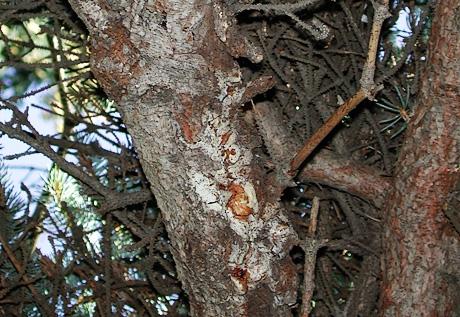
Take every precaution to keep the trees healthy and strong. Water them during dry periods and fertilize them annually to provide nutrients. Vigorous trees are less likely to get attacked. Prune out any infected branches and burn them, since the fungus overwinters in cankered bark. Use bleach to disinfect the pruners before and after each use. The best time for pruning is late winter or early spring in dry, sunny weather.

What is Cytospora Canker? You may not have heard of cytospora canker until after a tree in your backyard is infected. If you notice that the lower limbs on your tree are dying, the tree might have cytospora canker disease. It attacks older trees, stressed trees and those with shallow roots or planted in inappropriate sites. One of the first symptoms of cytospora canker disease on spruce is the browning of needles on the tree’s lower limbs. When they fall, you may notice light patches of resin on the dead bark of the branches.

Over several years, symptoms of cytospora canker spread and upper branches brown and die. Dead areas of bark appear, known as cankers. On trees without needles, like peach trees, look for cankers on branches around pruning wounds. They may be present for several years, extending along the branch, before they kill it. Control of Cytospora Canker You may look to fungicidal sprays as a cytospora canker treatment, but these are not effective and are not recommended by experts. Instead, try using organic methods for control of cytospora canker. Prevention is easier than cytospora canker treatment. Take care not to wound trees susceptible to this disease. Wounds, like those from weed whackers and saws, serve as entry points for the fungus. Crowded trees are more likely to get and pass along the fungus. Plant yours with lots of room and good air circulation.

Take every precaution to keep the trees healthy and strong. Water them during dry periods and fertilize them annually to provide nutrients. Vigorous trees are less likely to get attacked. Prune out any infected branches and burn them, since the fungus overwinters in cankered bark. Use bleach to disinfect the pruners before and after each use. The best time for pruning is late winter or early spring in dry, sunny weather.
0
0
文章
Miss Chen
2017年08月07日


Zantedeschia_ ssp.
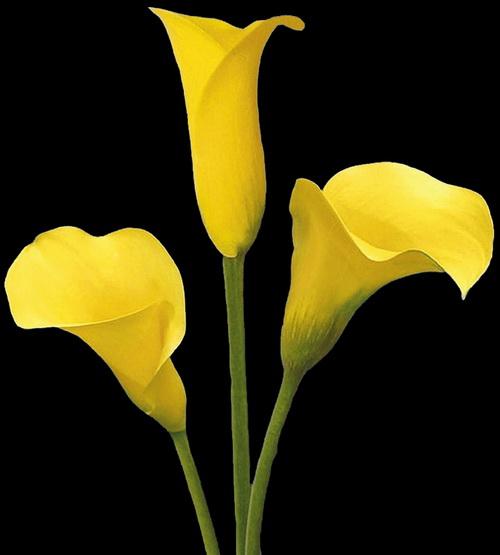
Funnel-shaped white callas represent a simple cool elegance in the garden, but the colored callas add a new dimension to the plant. Now available in a rainbow of hues including lavender, purple, orange, yellow, and peach, these South African natives perk up container gardens and borders. The plants go dormant in colder winter areas of their hardiness range and do not emerge until temperatures warm up in late spring. Outside of their hardiness range, store the rhizomes in a frost-free place for winter.

LIGHT:Part Sun, Shade, Sun
TYPE:Bulb
HEIGHT:1 to 3 feet
WIDTH:To 3 feet wide
FLOWER COLOR:Blue, Green, Orange, Pink, Red, White
FOLIAGE COLOR:Chartreuse/Gold
SEASONAL FEATURES:Summer Bloom
PROBLEM SOLVERS:Deer Resistant, Groundcover
SPECIAL FEATURES:Fragrance, Good for Containers, Low Maintenance
ZONES:7-10

1
0





